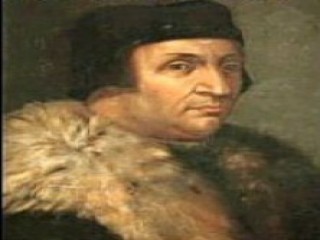
Francesco Guicciardini biography
Date of birth : -
Date of death : -
Birthplace : Florence, Italy
Nationality : Italian
Category : Historian personalities
Last modified : 2011-05-31
Credited as : Historian, and statesman, The Storia d'Italia
The Italian historian and statesman Francesco Guicciardini is best known for his history of Italy, which covers the period from 1492 to 1532.
Francesco Guicciardini was born in Florence into a prominent mercantile family. After graduating in civil law from the University of Pisa, he began a successful practice with clients drawn from the leading Florentine families, merchant organizations, and monastic orders. In 1508 he married Maria Salviati, who bore him seven daughters. His first political appointment, the important one of ambassador to Spain, came to him at the early age of 28. After the return to power of the Medici in Florence and the elevation to the papacy of Cardinal Giovanni de' Medici as Leo X, Guicciardini insisted upon being recalled, arriving home in January 1514. Two years later he was appointed governor of Modena, beginning a career of Church service that endured until the triumph of imperial forces in Italy and the occupation of Rome by troops of Charles V in 1527.
Under Pope Clement VII, his close friend, Guicciardini's power in Romagna was extended. An able governor, he resolutely established order and instituted fiscal reforms and a program of public works. He played a key role in the formation of the anti-imperial League of Cognac in 1526. The third and last Florentine Republic condemned him in absentia on trumped-up charges in 1530, shortly before it fell. When Guicciardini opposed absolute power for the reinstated Medici regime, Clement VII sent him away to be governor of Bologna. When Cosimo I de' Medici reached an accord with Charles V, Guicciardini, still an anti-imperialist, lost favor and retired to his villa of Santa Margherita in Montici. Like his friend Niccolò Machiavelli, he wrote his most important works during a period of political disgrace.
Guicciardini's masterpiece, the Storia d'Italia (History of Italy), was written from 1537 to 1540. Published in 1561, the work met with great success, spreading throughout Europe in translation. The Storia d'Italia was a history not just of Italy but of Europe. Guicciardini's skill at interrelating political movements in many states, his objectivity even in analyzing events in which he directly participated, his combination of broad perspective with shrewd psychological insights into the contemporary makers of history are truly remarkable. Among the famous passages, sometimes anthologized for their literary verve, are his delineation of conditions in Italy upon the death of Lorenzo de' Medici in 1492 and his portrait of Clement VII.
His other works include Storia fiorentina (1509), Relazione di Spagna (ca. 1514; Report on Spain), Dialogo del reggimento di Firenze (1525; Dialogue on the Government of Florence), Ricordi politici e civili (1529; Political and Civil Memoirs), and Considerazioni sui Discorsi del Machiavelli (1529; Considerations on Machiavelli's Discourses). Of these works the last two are the most important. Guicciardini's Ricordi fails to make the clear distinction between public and private morality made by Machiavelli, but it combines shrewd personal observation with fragmentary political analysis.
















